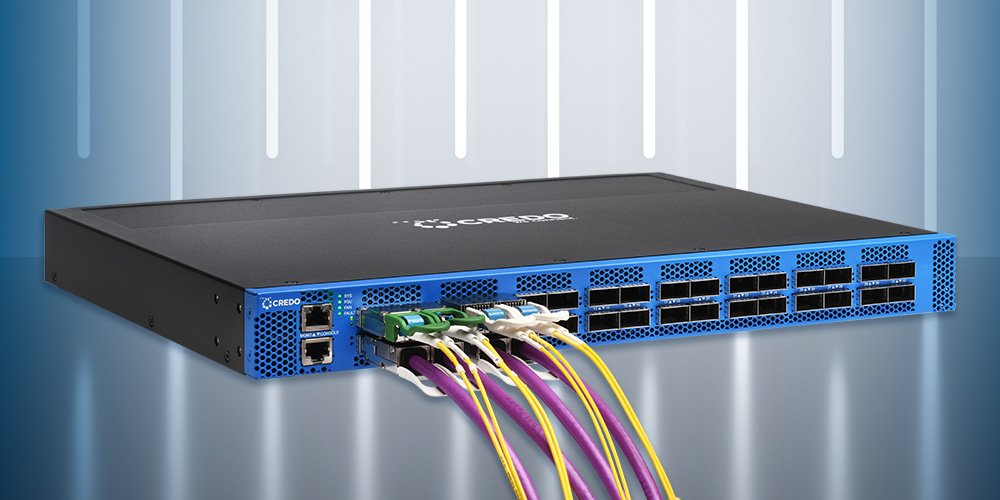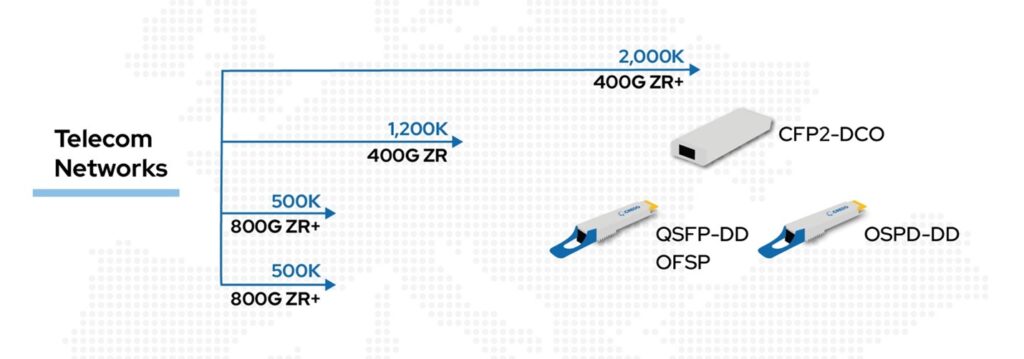
These modules, initially tailored for inter-data center connections among large hyperscalers using OIF 100G/400G ZR standards, continue to find new applications. The fact that the modules plug directly into switches and routers has eliminated the need for a separate optical transport layer.

The adoption of 400G Open ZR+ has further extended the reach of these applications, thanks to advanced error correction and dispersion compensation techniques. This evolution not only empowers hyperscalers, but also opens up lucrative opportunities for service providers, enabling them to leverage these enhanced “plus” version modules in various network environments, including cloud, urban, and regional networks.

ZR/ZR+ Success with Hyperscalers: A Paradigm Shift
Hyperscalers are looking to leverage ZR/ZR+ coherent pluggable modules to reap the benefits of seamless data transmission, reduce power consumption, lower costs, and gain a smaller footprint. One key strength of ZR/ZR+ modules lay in their interoperability which enables seamless integration into existing infrastructure. All of this makes them highly attractive for both hyperscalers and service providers.
Challenges with Deploying ZR/ZR+ for Service Providers
Despite the myriad of benefits, service providers face many challenges and obstacles while considering 400G and upcoming 800G rollouts with ZR+ coherent optics in their CIN, IP edge, aggregation, and backbone networks. Challenges include:
Introducing HiWire P3: A Game-Changing Solution
To address these challenges head-on, Credo unveiled the HiWire Pluggable Patch Panel (P3) during the OCP ‘23 Show. This innovative solution empowers both service providers and hyperscalers by decoupling pluggable optics from core switching and routing hardware, using Credo’s HiWire Active Electrical Cables (AECs). This offers the flexibility to choose whichever coherent optics they would like to use in their system, allowing them to support 400G and 800G optics.
At its core, HiWire P3 is a simple media conversion box at L1, providing an electrical trace between the pairs of QSFP-DD ports. Ports are powered and cooled within the system and can be accessed using I2C-bus and use low level CMIS interface API. This model supports 32 QSFP-DD ports, 16 of them supporting up to 25W of power designed to support up to 800G ZR+ modules, while the other 16 can support up to 15W for AEC cables.
The flexibility and scalability the HiWire P3 offers, empowers organizations to choose coherent optics tailored to their specific needs, supporting both 400G and 800G optics seamlessly. Some of the features enabled by HiWire P3 are:
With the introduction of HiWire P3, service providers and hyperscalers alike can overcome the challenges associated with deploying ZR/ZR+ modules, unlock their full potential and enjoy benefits including:
As the optical networking landscape continues to evolve, solutions like HiWire P3 are paving the way for a new era of connectivity. By empowering service providers to embrace coherent pluggable technologies with confidence, Credo is driving innovation and propelling the industry forward. The future of networking is here, and it's brighter than ever, thanks to HiWire P3.
Learn how Credo HiWire P3 enables service providers and hyperscalers the freedom to decouple pluggable optics from core switching and routing hardware using Credo’s HiWire Active Electrical Cables (AECs).
Click here to view the video